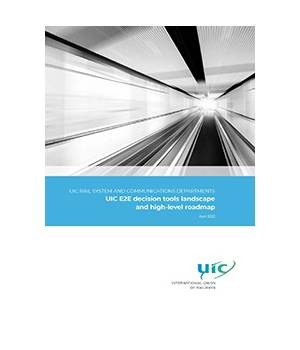
UIC E2E decision tools landscape and high-level roadmap
Undoubtfully, now is the moment for most networks to get benefit of recent advances in Information Technologies (IT). Advances come not only from an excellent and improving price to computational power ratio, but from algorithmics (Artificial Intelligence) and our capacity to make sense from huge amounts of data (Big Data technics). Experience shows, however, that IT introduction does not necessary lead to better productivity. To counter the Parkinson's law (work expands so as to fill the time available for its completion), IT implementation needs to be associated with the right changes in organisational structure and processes.
Several key learnings could be established using the UIC Framework to analyse current practice of several railway networks.1 Learnings cover Network and Route Objectives, Asset and Operational Strategy and Plans, Route Delivery and Timetable and Access Planning, and Execution of Works and Network Operation.
Related to the network and route objectives:
- Coordination of high level objectives to endure synergy with other large public networks (energy, health,…) goes far beyond the power of the lone railway managers. Though the latter could (and should) be associated to this effort, the leading role in this is out of their sole capabilities.
- In setting network objectives, railway management may consider pursuing a proactive approach. Railways' structural advantages can be highlighted in regard to the anticipated evolution of national policies under climate changes concerns.
- Setting high level objectives can sometimes be supported by IT tools. However, the multiplicity of stakeholders and the need to design acceptable trade-offs confine the IT tools into a limited, supportive role at this stage.
- Network management should explicitly recognise for which market segments there is need to adopt a demand driven approach, and for which segments it is wise to resort to a service driven one. Route objectives depend on this choice.
| Author | UIC |
| ISBN | 978-2-7461-3189-7 |
| Pages | 44 |
Data sheet
- Language
- English
- Format
- Downloadable
- Edition
- Ed. no.1
- Edition date
- 01/04/2022
- Publication date
- 25/05/2022
- Page number
- 44
- sku
- 5-22003E-PDF
- Reference
- 5-22003E
 Cookie preferences
Cookie preferences

